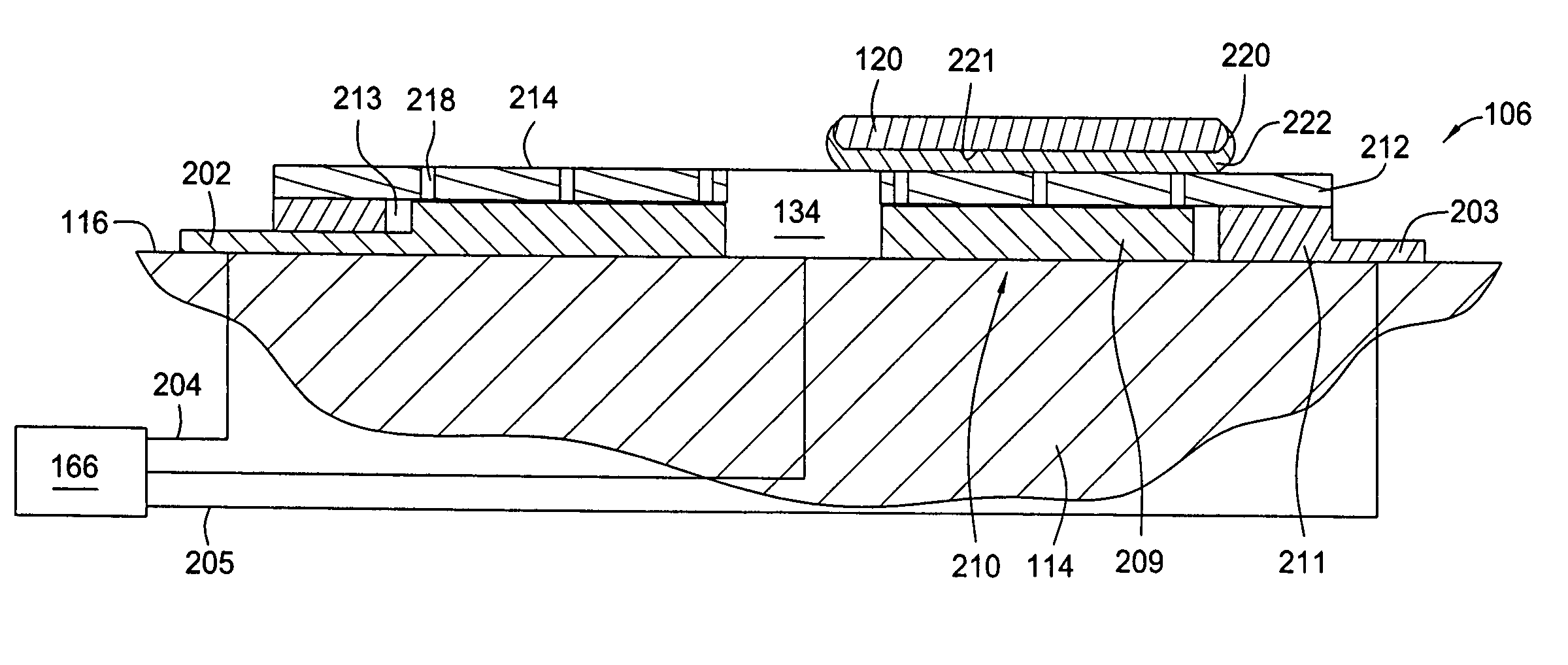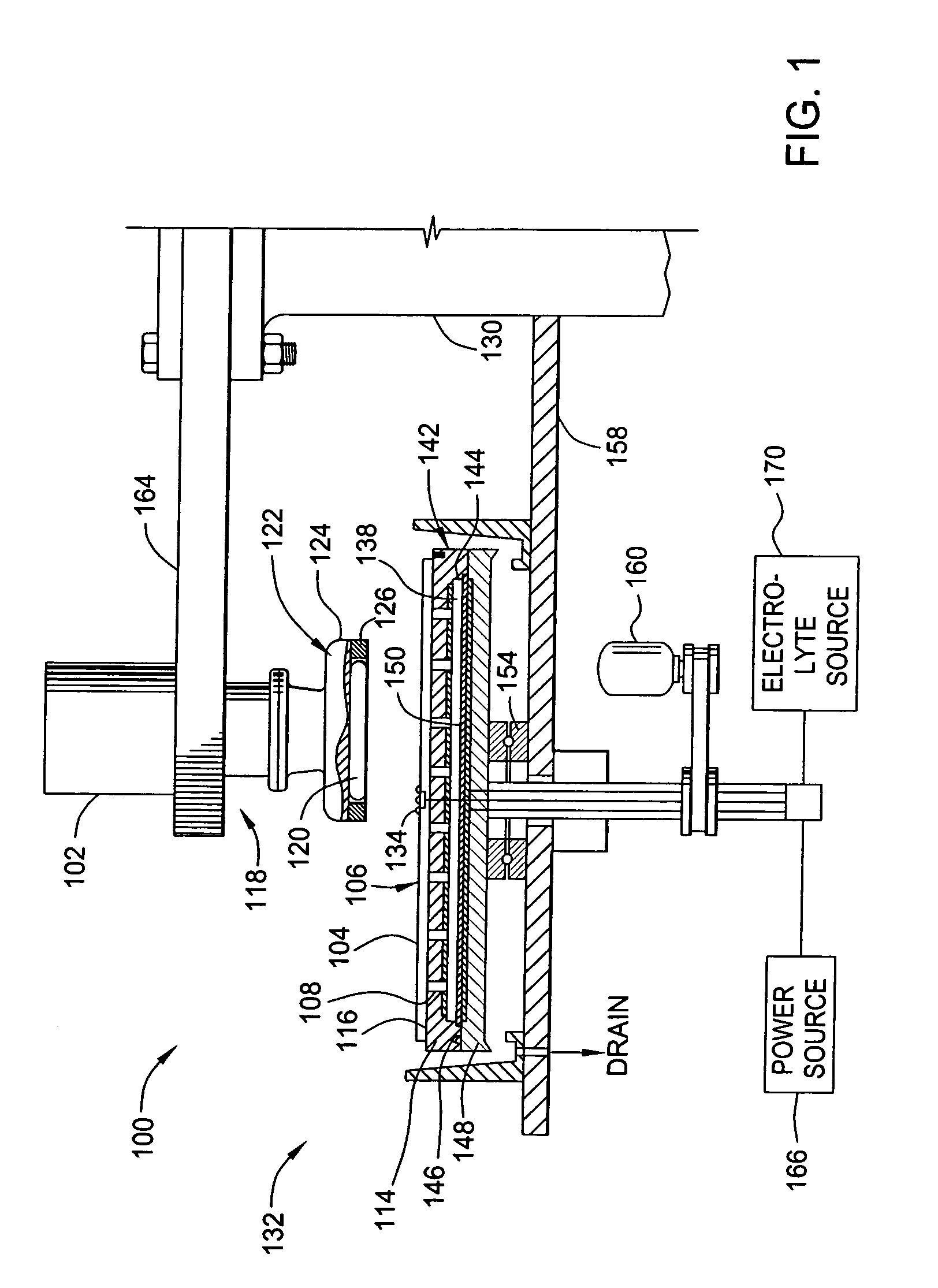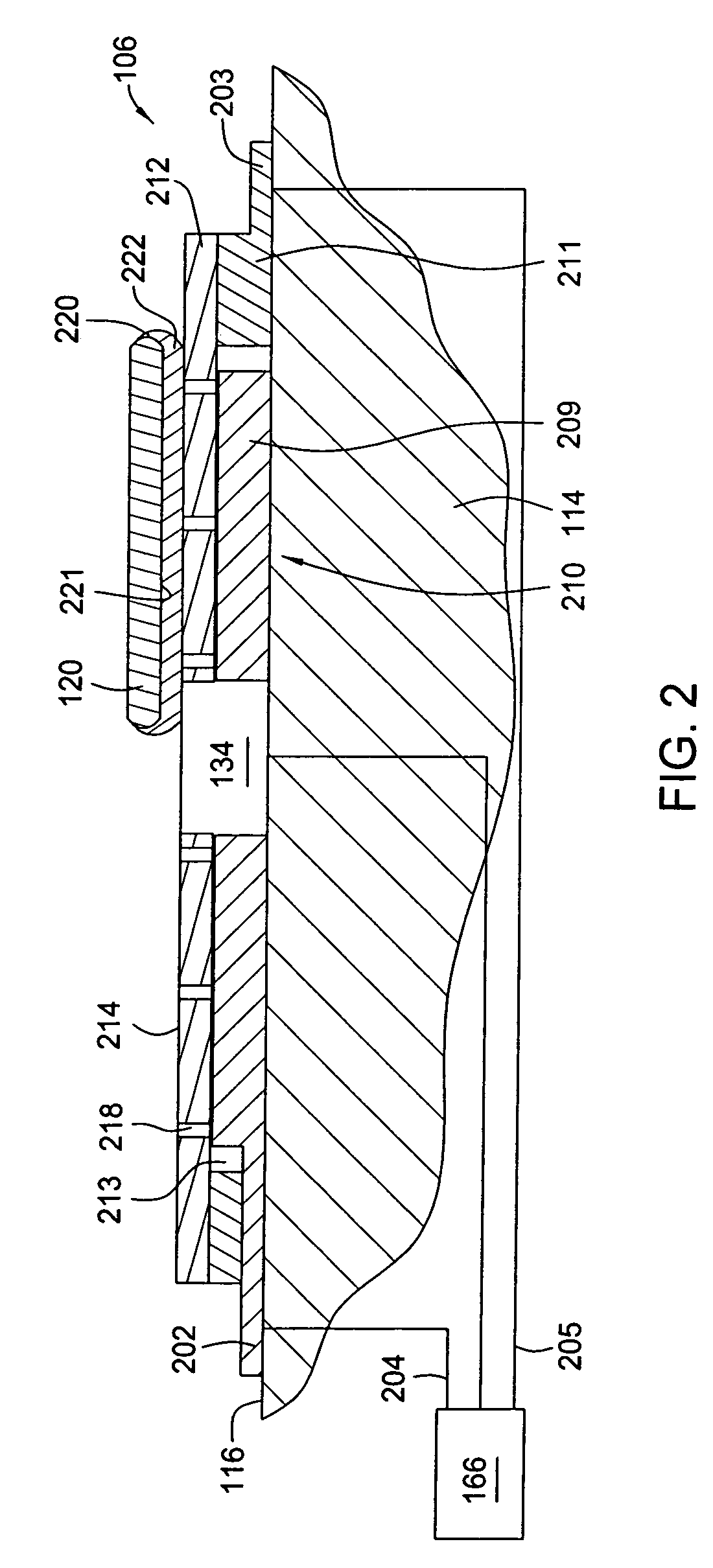Edge bead removal by an electro polishing process
a technology of electro polishing and edge bead removal, which is applied in the direction of machining electric circuits, lapping machines, manufacturing tools, etc., can solve the problems of short circuit, increase cost, and delamination of copper layers and other problems
- Summary
- Abstract
- Description
- Claims
- Application Information
AI Technical Summary
Benefits of technology
Problems solved by technology
Method used
Image
Examples
Embodiment Construction
[0016]The invention generally relates to the edge bead removal (EBR) from a substrate by an electro polishing process. The electro polishing process may occur simultaneously during electrochemical mechanical processing (Ecmp) of the substrate using one or more electrodes positioned proximate to the edge of the substrate and having a sufficient potential to selectively electro polish the edge. While an exemplary Ecmp station will be described herein for utilizing the electrode to electro polish the edge, it is contemplated that that the electrode may be utilized without a polishing pad in stations other than an Ecmp platen in order to electro polish the edge of the substrate. Further, any Ecmp platen and polishing pad may be utilized for polishing the substrate when the electrode is part of an Ecmp station. For example, other Ecmp stations may use different carrier heads and / or different platen assemblies than those described herein without departing from the scope of the invention.
[...
PUM
| Property | Measurement | Unit |
|---|---|---|
| voltage | aaaaa | aaaaa |
| voltage | aaaaa | aaaaa |
| voltage | aaaaa | aaaaa |
Abstract
Description
Claims
Application Information
 Login to View More
Login to View More - R&D
- Intellectual Property
- Life Sciences
- Materials
- Tech Scout
- Unparalleled Data Quality
- Higher Quality Content
- 60% Fewer Hallucinations
Browse by: Latest US Patents, China's latest patents, Technical Efficacy Thesaurus, Application Domain, Technology Topic, Popular Technical Reports.
© 2025 PatSnap. All rights reserved.Legal|Privacy policy|Modern Slavery Act Transparency Statement|Sitemap|About US| Contact US: help@patsnap.com



